Driving along Highway 191 to Chinle, Arizona, a small town in the Navajo Nation, feels like visiting another planet. Red rock formations rise out of the red dirt, and striped mesas loom in the distance. There is only the road ahead, the desert and the bright blue sky for miles.
The house where Christopher Braidhair grew up is just outside Chinle. To get there, you turn off the highway onto an unmarked, red dirt track and bump along through the sagebrush until you reach a white house sitting alone beside the fenced ledge of a canyon. A sweet dog named Woodrow and a few friendly goats will come to greet you, and the bamboo in the front yard will rustle in the cold wind as you stand awestruck by the beauty of this landscape.
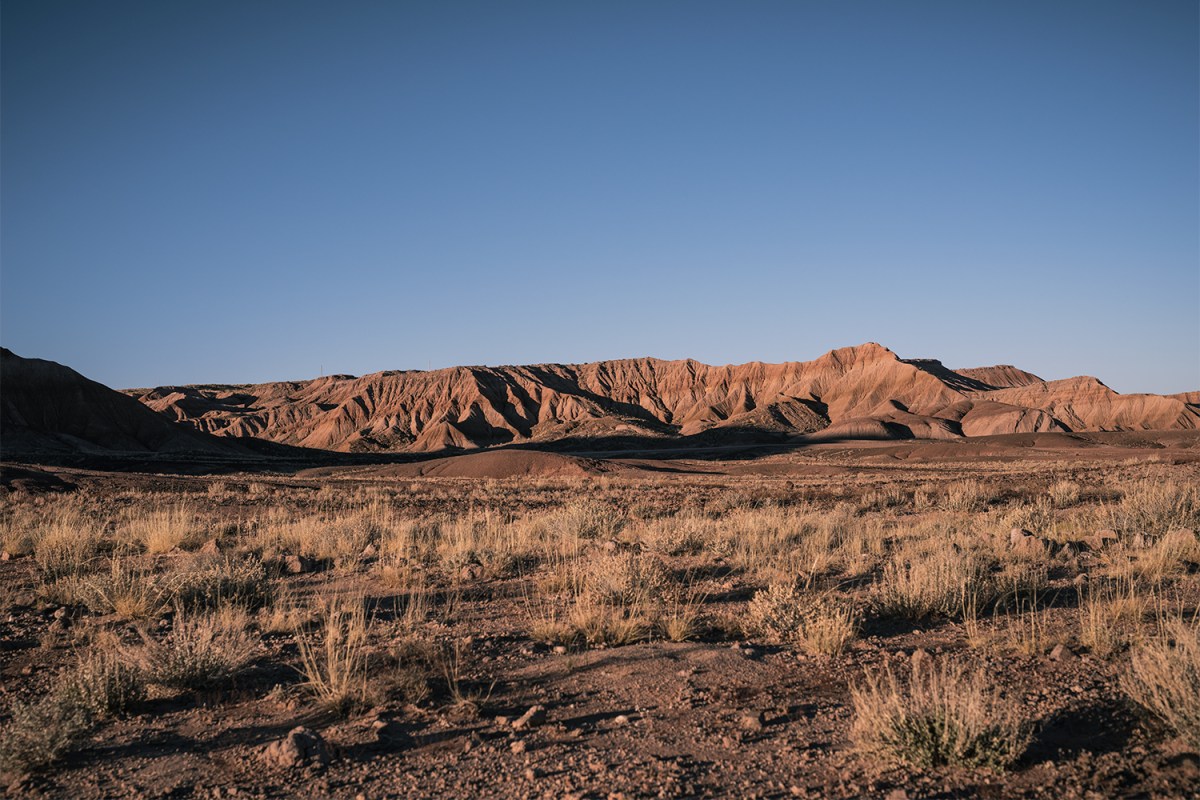
The landscape of the Navajo Nation near Chinle, Arizona.
Inside the house, Chris’s mom Judy Braidhair sits on the sofa beside the woodstove. She explains that the natural world is everything in Navajo culture. “We are one-to-one with Mother Earth,” she says. “We say she is me and I am her.”
She points out the window, where not a single building can be seen. “We have 160 acres,” she says. “All the native plants are growing. You can feel the oxygen when you’re out there walking around. You just feel the peacefulness.”
Chris and his three siblings have always lived close to the land. Going to the store for their mother meant a seven-mile walk through the desert where wild horses ran. Their house didn’t have electricity, so they studied in the flickering shadows of kerosene lamplight. They hauled water in buckets from the windmill down the road. It was a hard life, but it was home.
“If you grow up here, if you know the culture, if you know your traditional ways, there’s no other place to live,” Judy says. “The creator knows you. He hears your prayers.”
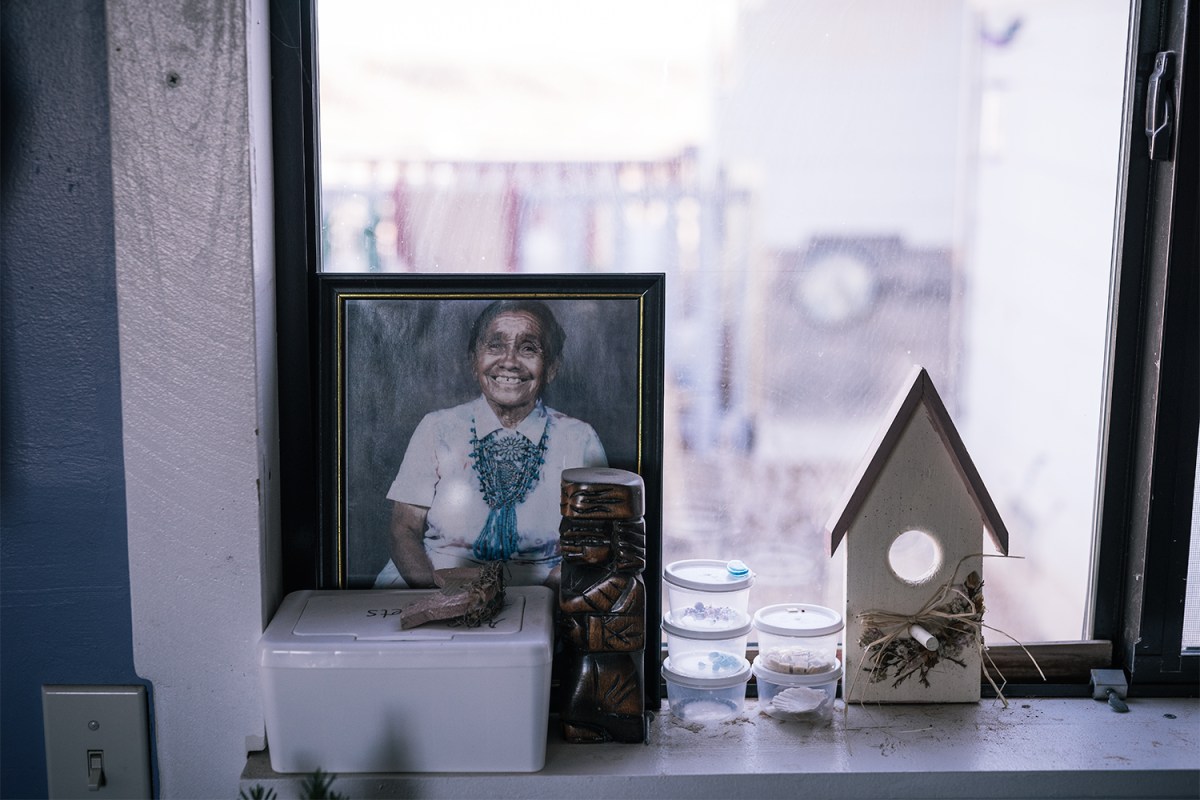
Chris’s grandmother was a respected medicine woman who helped many in her community. She lived to the age of 105.
Perhaps that’s how Chris accomplished his great ambition to become an EMT, against all odds. He had been influenced by his grandmother, a medicine woman who was highly respected in the community. Her standard fee was $2 and a can of coffee, but sometimes people brought cinnamon rolls or apple pie as payment. She never turned anyone away.
Watching his grandmother perform ceremonies for people made a big impression on Chris. “They’d leave with the knowledge of being helped,” he says. “Like a stone got lifted off their shoulders.”
After his grandmother died at the age of 105, Chris decided to follow in her footsteps, in his own way. He wanted to serve his community and to help people as his grandmother had. But Chris couldn’t afford the EMT training course. That’s when he heard about the Arizona Conservation Corps, which engages young people in stewardship projects in exchange for an education award.
The idea started with Franklin D. Roosevelt in 1933; the Civilian Conservation Corps was one of the first New Deal programs. FDR believed that a civilian “tree army” would help the unemployed and keep young people out of trouble, in addition to promoting conservation. That’s still the basic concept today.
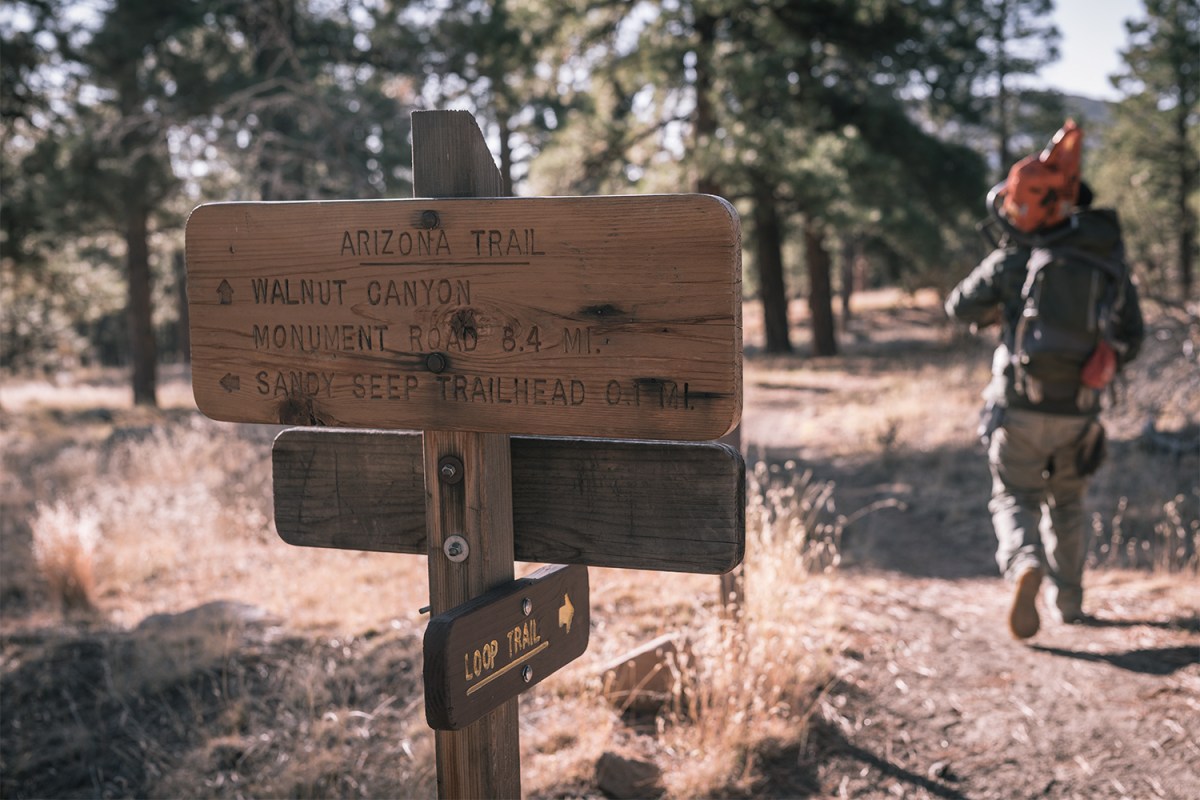
Chris carries his chainsaw on the Arizona Trail. He often works on the 800-mile trail as a member of the Conservation Corps.
Chris signed up with a plan to come home as soon as he had earned enough for his training course. His first “hitch,” or period of service, was on the Arizona Trail. The trail stretches 800 miles across the state, between the Mexico and Utah borders. It gains and loses thousands of feet in elevation, and crosses diverse terrain from desert canyons, mountains and boreal forests. For Chris, the trail with its cactus forests and slot canyons was just like home.
“Coming from a native background, I fell in love with the work,” Chris says. “It’s very peaceful hiking on a trail. You’re one with nature, and it’s really sad to see people disrespect it. I was a Leave No Trace ambassador, I guess. I took it upon myself.”
Some crews carry chainsaws and do heavy work; others fix streams or build rock structures to prevent erosion. One of Chris’s more recent projects was to get rid of invasive tamarisk. “It sucks up all the salt from the soil, and then [salt] just leaks out of its pores onto the ground,” he says. “So you cut the tamarisk down, then you spray some herbicide on it. And then you plant cottonwood or willows or whatever native plants we have around.”
Chris says conservation work is “very demanding and very repetitive,” but it’s worth it. “You feel a sense of accomplishment,” he says.
As a Navajo, there are some nature-related taboos to avoid in the backcountry. Chris is not allowed to stand up when it’s lightning, yell when it’s raining, or look into the darkness at night, “but with this job camping, you have to draw the line,” he says.

Chris stands on his family’s 160 acres in the Navajo Nation. He says he considers himself “modern-day native” and lives close to the land.
Chris says he’s not very traditional, but he does follow some practices and beliefs. If a coyote crosses his path, it means something bad is going to happen along that road. “So what you have to do is pull over and bust out your corn pollen and pray to the sun and ask for a safe journey,” he says. “That, I would’ve followed, but certain things I don’t follow.”
For instance, he has a tattoo, which is forbidden. His mother always told him that harming his body is the same as harming Mother Earth. “I like to be modern-day native, I guess,” he says.
Chris enjoys the cross-cultural exchange that happens with new crew members. He’s interested in people from different backgrounds, and they’re often curious about Navajo culture. “They want me to make fry bread every time,” he says. “I’m like okay, all right, I will make fry bread. Actually this past hitch, they wanted fry bread and something sweet. So I’m like, We have cinnamon and brown sugar. I think I could mix it in with the dough. And then everyone lost their minds.”
At first, Chris had been anxious about being out in the backcountry with strangers. He was used to his own tight-knit family and his small town. But in his crew members he found kindred spirits who loved nature as much as he did. “It was like that bonding moment—we were doing something, making a little movement to help preserve nature,” he says. “It was awesome.”

Chris plays with his dog, Woodrow, at his family’s house. He and his three siblings grew up here without electricity or running water.
After two years, Chris had earned enough to study for his EMT certification. He was thrilled when he passed his test; his dream had been realized. But back at home, Chris discovered something: He missed being on the trail with his crew. “I love working for the Conservation Corps,” he says. “It’s just great and empowering. It’s traveling and seeing different places, you know? Hiking on the trail, camping with nine other people. After the eighth day, you’re like crazy family.”
He decided that the reservation could wait. He would continue on with the Conservation Corps as long as he was eligible; the cutoff age is 27, so his time was limited. He still wanted to see more of the wilderness, and work harder to protect it.
A crew’s typical schedule is nine days on the trail and five days off. Chris likes to spend his free time exploring new places with his friends, but when he can, he makes the long drive home to Chinle. One night during a visit home, he was awakened by his dad and sister shouting his name. They thought Judy was having a stroke. “We’re only like five minutes away from the hospital, but the ambulance never came,” he says.
Chris responded to his mother according to his EMT training. Then he drove her to the hospital, where it was discovered that she had brain cancer.
After the incident with the ambulance, Chris has become determined to improve the entire EMS system in Chinle. And he’s grateful that he’d managed to become an EMT in time to help his mom. “I felt accomplished,” Chris says. “I was there to respond because I had my training. I never expected to practice so close to home.”
After surgery removed the tumor, Judy was paralyzed on one side, had lost her memory and couldn’t count higher than ten. “I was supposed to be like a vegetable,” she says. “The surgeon gave me the option, either go to a nursing home or a hospice, and I told him, No, I’m going home.”
Two months later, there were no obvious indicators that she was ill. Judy says that the progress she’s made is what’s expected after a year. “I have a medicine woman helping me,” she explains. “The only problem that I have is when it rains and the thunder part echoes through my head. I have to work with the thunder people.”
The name Braidhair has a deep significance for the Navajos. They believe your hair keeps your mind together. If you let it loose, your mind is all over the place. If you cut it off, you have cut off your knowledge. This is especially meaningful to Judy, because hers is cropped very close to her skull. “I shouldn’t have this hair,” she says. It has just begun to grow back after surgery, and the six-inch scar where the tumor was removed is still visible.
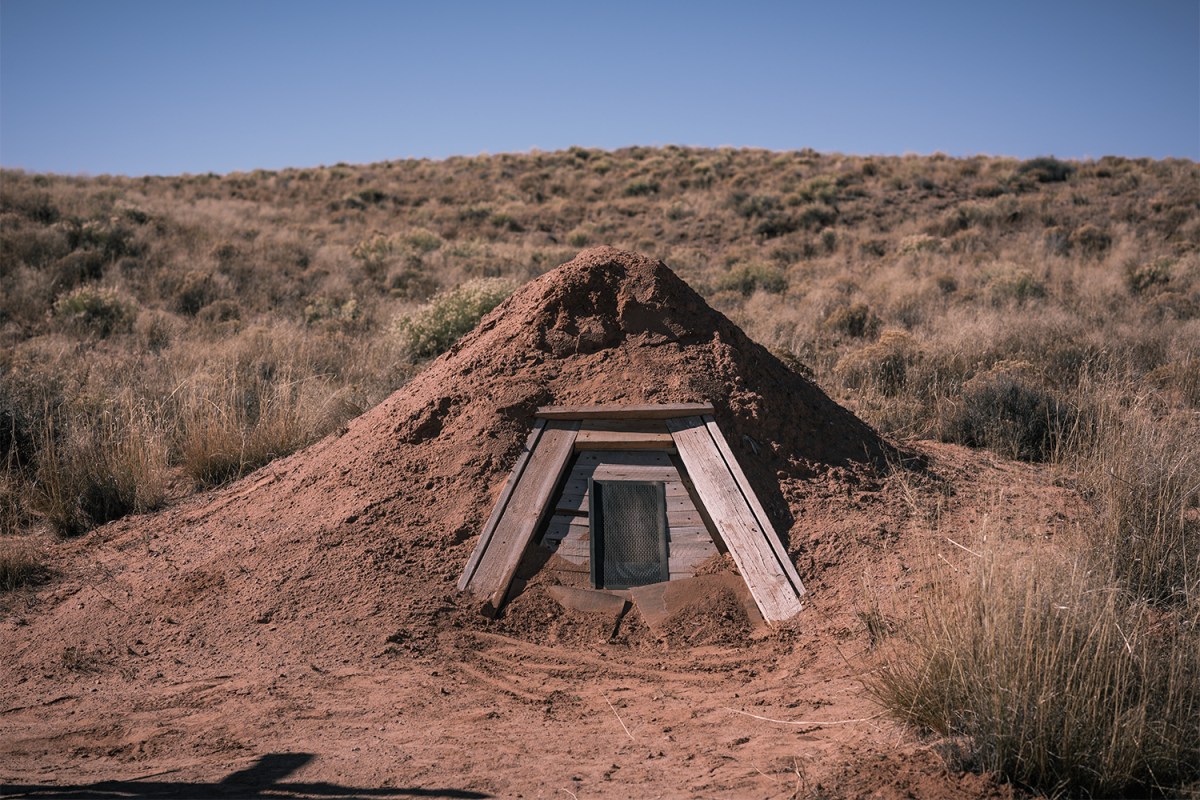
The sweat lodge that Chris and his dad, Herbert Braidhair, built in their backyard. The Navajos use it to cleanse body, mind and spirit.
Chris goes home to visit his mom as often as he can. He’s 27 now, so he’s relishing his last year as a steward with the Conservation Corps. Meanwhile, he has taken steps to help his community by building a sweat lodge with his dad, Herbert. Chris’s older brother was a Marine who came home with PTSD, as did many others, and Chris and Herbert decided the community needed a sweat lodge to heal their psychological and spiritual wounds, so they built one in their backyard. From the outside, it looks like a giant molehill. Inside, it’s a smoothed-earth cavern, an underground sanctuary.
The origin of the sweat lodge comes from a time when the Navajo people were succumbing to disease, and the medicine men and women used the sweat lodges to “wash off the death,” according to Herbert. Since then, it’s been used to cleanse the mind as well as the body. Herbert says there are four cycles, and people come out for breaks in between. During the fourth cycle, you stay inside “until you feel like what you went in there for has been accomplished,” he says.
Chris has reached that point with the Conservation Corps. He got what he went in for—and more than he’d ever expected. He’s better at talking to new people, he has developed confidence, and he’s made friends for life. His stewardship of the land has given him a strong foundation to be a leader in his community someday. And thanks to his hard work and that of the other crew members, the land his culture so deeply respects will be protected for generations to come.
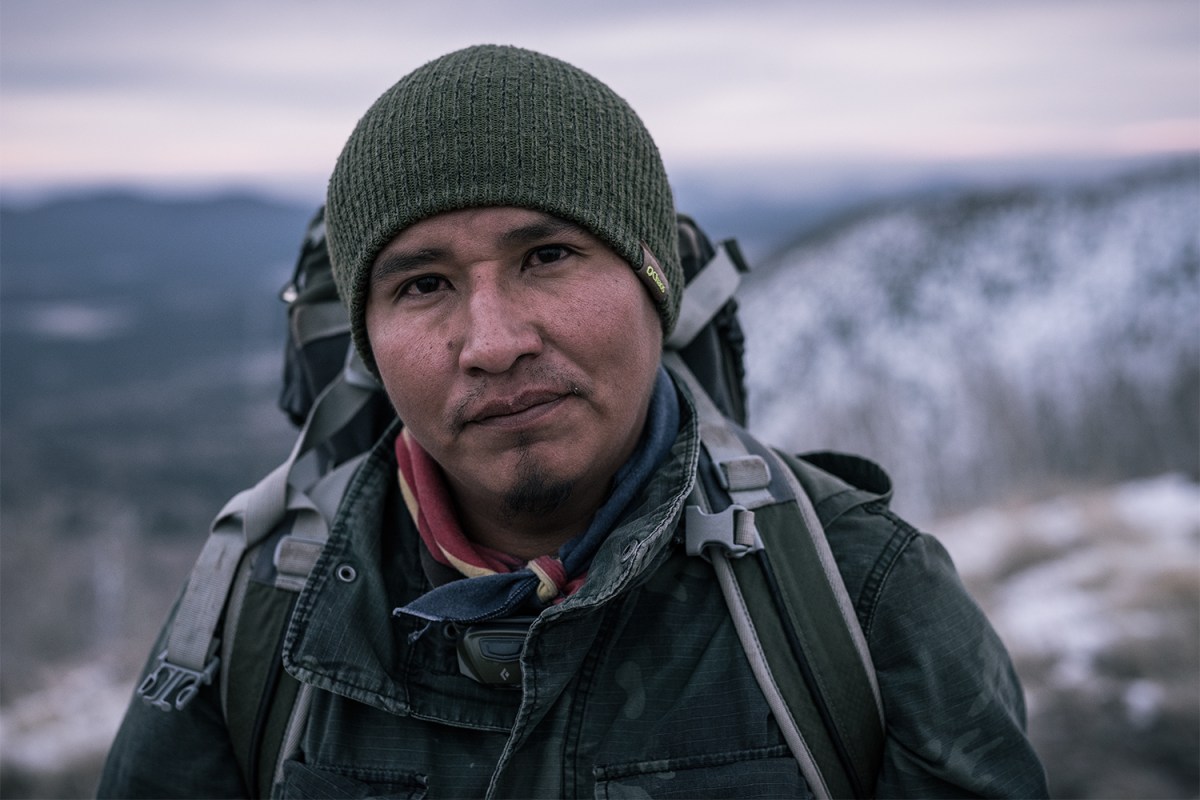
Learn more at REI.com/trails.


